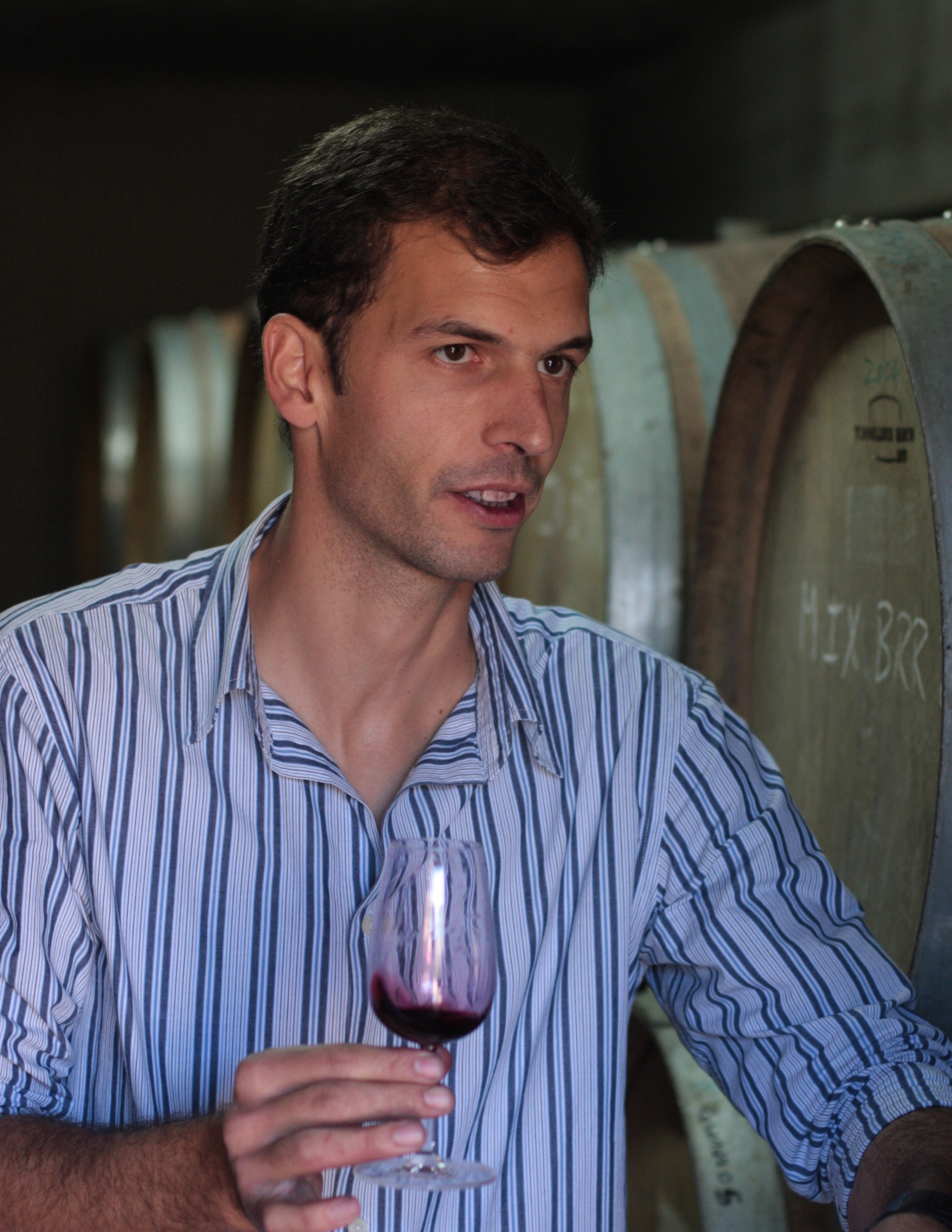 To monitor the evolution of finished port or wine post-harvest, tasting is an ongoing process at Quinta do Tedo.
To monitor the evolution of finished port or wine post-harvest, tasting is an ongoing process at Quinta do Tedo.
We start to have an idea of what to expect re: harvest quality in the spring – via the amount of rainfall, weather conditions and grapevine flowering. Luckily we have never had a grape harvest devastated by adverse conditions such as hail, snow and etc as can happen, for example, in Burgundy, as the weather conditions are generally more consistent here in Douro Valley. #1 in wishful thinking is for enough rainfall and that the heat spells are not too severe. Come the beginning of August we start the tasting with samples of approximately 200 berries (yes, in winemaking terms the individual grapes are called berries) taken from our 12 parcels; we then test for alcohol potential, ph and acidity levels. This tasting and testing is repeated mid-August and end of August to see the final evolution/concentration and to determine when the harvest will commence.
When we sort the harvested clusters in from the vineyards, we evaluate the quality visually, looking for intact bunches, uniform dark color and healthy small berries. After the 3 days that the must is in the lagar, having been foot treaded (for port) and punched down mechanically (for wine), aromas fill the air, to justify our developing quality opinions about the harvest. Pressed and fortified, our port is created; pressed and put into barrels for malolactic fermentation our red wine is created. The new port and wine then rest, and we do, too, after the labor-intensive and sleep-deprived harvest period.
For both port and wine quality we look for balance, length, intensity and complexity. Both the port and wine will not develop these attributes, the « base product » already has to have it. As the port and wine “rest”, we monitor the development, tasting from the tanks and barrels, depending on the product, or with small bottle samples for tasting and lab testing. Tasting, tasting and more tasting.
We try to make the best and most concentrated port every year, but it is only after 18 to 24 months that we declare or not if the harvest is worthy of Vintage or LBV status. If we do not find the potential to make a Vintage or LBV the port will be put into oxidation-enhancing small barrels for our different Tawny ports or in fruit-preserving larger barrels/tanks for Ruby and Finest Reserve Ruby. All barrels, small or large in dimension, that are used are neutral in wood flavor, due to previous passages for our red wine.
For our red wine, after 9 months we already have an idea which barrels merit further aging to become Reserva or Grande Reserva, or to be bottled earlier for Douro DOC. Not to write that our Douro DOC, that we produce every year is not commendable, as the quality is definitely apparent, but without the base concentration needed for extended barrel aging. At this point we decide which barrels to age for another 15 months, to make 4000 bottles of Reserva in very good years or 2000 bottles of Grande Reserva in outstanding years.
The final decision of what will be called Vintage, LBV, Ruby or Tawny Port or Douro DOC, Reserva or Grande Reserva comes from the official approving body, the IDVP (Douro and Port Wine Institute). Samples are sent and the tasting panel will decide the "destiny"; the ports and wines are judged according to a typicity required by the IDVP. About 10% of total producer samples are rejected by the IDVP. As a quinta owner you can resend the samples for a 2nd round of tasting or you change the proposed classification (an originally proposed Vintage is re-proposed as an LBV, or an LBV becomes a blend for a Tawny, etc), or the Douro wines, a Grande Reserva becomes a Reserva. So far our Quinta do Tedo samples have always been accepted and we have never had to declassify our ports or wines.
And the tasting continues when you, our valued customer, have opened a bottle of Quinta do Tedo ~







